tert-butyl vinyl ether

tert-butyl vinyl ether structure
|
Common Name | tert-butyl vinyl ether | ||
|---|---|---|---|---|
| CAS Number | 926-02-3 | Molecular Weight | 100.159 | |
| Density | 0.8±0.1 g/cm3 | Boiling Point | 75.0±0.0 °C at 760 mmHg | |
| Molecular Formula | C6H12O | Melting Point | 75-76ºC(lit.) | |
| MSDS | Chinese USA | Flash Point | -21.3±10.8 °C | |
| Symbol |


GHS02, GHS07 |
Signal Word | Danger | |
| Name | tert-butyl vinyl ether |
|---|---|
| Synonym | More Synonyms |
| Density | 0.8±0.1 g/cm3 |
|---|---|
| Boiling Point | 75.0±0.0 °C at 760 mmHg |
| Melting Point | 75-76ºC(lit.) |
| Molecular Formula | C6H12O |
| Molecular Weight | 100.159 |
| Flash Point | -21.3±10.8 °C |
| Exact Mass | 100.088814 |
| PSA | 9.23000 |
| LogP | 1.74 |
| Vapour Pressure | 117.3±0.1 mmHg at 25°C |
| Index of Refraction | 1.400 |
| InChIKey | PGYJSURPYAAOMM-UHFFFAOYSA-N |
| SMILES | C=COC(C)(C)C |
| Storage condition | Refrigerator (+4°C) + Flammables area |
| Stability | Stable. Highly flammable. Incompatible with strong oxidizing agents. May be prone to the formation of peroxides when stored in contact with air. |
| Water Solubility | Miscible with alcohol, carbon disulfide, chloroform and diethyl ether. Slightly miscible with water. |
Synonym: Section 2 - COMPOSITION, INFORMATION ON INGREDIENTS
Risk Phrases: 11 52/53 Section 3 - HAZARDS IDENTIFICATION EMERGENCY OVERVIEW
Highly flammable. Harmful to aquatic organisms, may cause long-term adverse effects in the aquatic environment. Potential Health Effects Eye: May cause eye irritation. Skin: May cause skin irritation. May be harmful if absorbed through the skin. Ingestion: May cause irritation of the digestive tract. May be harmful if swallowed. Inhalation: May cause respiratory tract irritation. May be harmful if inhaled. Chronic: Not available. Section 4 - FIRST AID MEASURES Eyes: Flush eyes with plenty of water for at least 15 minutes, occasionally lifting the upper and lower eyelids. Get medical aid. Skin: Get medical aid. Flush skin with plenty of water for at least 15 minutes while removing contaminated clothing and shoes. Ingestion: Get medical aid. Wash mouth out with water. Inhalation: Remove from exposure and move to fresh air immediately. Notes to Physician: Treat symptomatically and supportively. Section 5 - FIRE FIGHTING MEASURES General Information: As in any fire, wear a self-contained breathing apparatus in pressure-demand, MSHA/NIOSH (approved or equivalent), and full protective gear. Vapors can travel to a source of ignition and flash back. Will burn if involved in a fire. Flammable liquid and vapor. Containers may explode if exposed to fire. Extinguishing Media: Use water spray, dry chemical, carbon dioxide, or chemical foam. Section 6 - ACCIDENTAL RELEASE MEASURES General Information: Use proper personal protective equipment as indicated in Section 8. Spills/Leaks: Absorb spill with inert material (e.g. vermiculite, sand or earth), then place in suitable container. Remove all sources of ignition. Use a spark-proof tool. Section 7 - HANDLING and STORAGE Handling: Use spark-proof tools and explosion proof equipment. Avoid breathing dust, vapor, mist, or gas. Avoid contact with skin and eyes. Take precautionary measures against static discharges. Storage: Keep away from sources of ignition. Do not store in direct sunlight. Store in a tightly closed container. Refrigerator/flammables. Section 8 - EXPOSURE CONTROLS, PERSONAL PROTECTION Engineering Controls: Use adequate general or local explosion-proof ventilation to keep airborne levels to acceptable levels. Exposure Limits CAS# 926-02-3: Personal Protective Equipment Eyes: Not available. Skin: Wear appropriate protective gloves to prevent skin exposure. Clothing: Wear appropriate protective clothing to prevent skin exposure. Respirators: Follow the OSHA respirator regulations found in 29 CFR 1910.134 or European Standard EN 149. Use a NIOSH/MSHA or European Standard EN 149 approved respirator if exposure limits are exceeded or if irritation or other symptoms are experienced. Section 9 - PHYSICAL AND CHEMICAL PROPERTIES Physical State: Liquid Color: colorless to yellow Odor: Not available. pH: Not available. Vapor Pressure: 105mbar @20 deg C Viscosity: 0.41 mPa.s @20 deg C Boiling Point: 78 deg C Freezing/Melting Point: Not available. Autoignition Temperature: 275 deg C ( 527.00 deg F) Flash Point: -17 deg C ( 1.40 deg F) Explosion Limits, lower: Not available. Explosion Limits, upper: Not available. Decomposition Temperature: Solubility in water: Slightly soluble. Specific Gravity/Density: 0.762 Molecular Formula: C6H12O Molecular Weight: 100.16 Section 10 - STABILITY AND REACTIVITY Chemical Stability: Not available. Conditions to Avoid: Incompatible materials, ignition sources, heat. Incompatibilities with Other Materials: Strong oxidizing agents. Hazardous Decomposition Products: Carbon monoxide, carbon dioxide. Hazardous Polymerization: May occur. Section 11 - TOXICOLOGICAL INFORMATION RTECS#: CAS# 926-02-3 unlisted. LD50/LC50: Not available. Carcinogenicity: tert-Butyl vinyl ether - Not listed by ACGIH, IARC, or NTP. Section 12 - ECOLOGICAL INFORMATION Ecotoxicity: Daphnia: Daphnia: TLm = 15 ppm; 48h; . Section 13 - DISPOSAL CONSIDERATIONS Dispose of in a manner consistent with federal, state, and local regulations. Section 14 - TRANSPORT INFORMATION IATA Shipping Name: ETHERS, N.O.S.* Hazard Class: 3 UN Number: 3271 Packing Group: II IMO Shipping Name: ETHERS, N.O.S. Hazard Class: 3 UN Number: 3271 Packing Group: II RID/ADR Shipping Name: ETHERS, N.O.S. Hazard Class: 3 UN Number: 3271 Packing group: II Section 15 - REGULATORY INFORMATION European/International Regulations European Labeling in Accordance with EC Directives Hazard Symbols: F Risk Phrases: R 11 Highly flammable. R 52/53 Harmful to aquatic organisms, may cause long-term adverse effects in the aquatic environment. Safety Phrases: S 26 In case of contact with eyes, rinse immediately with plenty of water and seek medical advice. S 61 Avoid release to the environment. Refer to special instructions/safety data sheets. WGK (Water Danger/Protection) CAS# 926-02-3: No information available. Canada CAS# 926-02-3 is listed on Canada's NDSL List. CAS# 926-02-3 is not listed on Canada's Ingredient Disclosure List. US FEDERAL TSCA CAS# 926-02-3 is listed on the TSCA inventory. SECTION 16 - ADDITIONAL INFORMATION N/A |
| Symbol |


GHS02, GHS07 |
|---|---|
| Signal Word | Danger |
| Hazard Statements | H225-H315 |
| Precautionary Statements | P210 |
| Personal Protective Equipment | Eyeshields;Faceshields;full-face respirator (US);Gloves;multi-purpose combination respirator cartridge (US);type ABEK (EN14387) respirator filter |
| Hazard Codes | F,Xi |
| Risk Phrases | R11 |
| Safety Phrases | S16-S26-S36 |
| RIDADR | UN 3271 3/PG 2 |
| WGK Germany | 3 |
| Packaging Group | II |
| Hazard Class | 3.1 |
| HS Code | 2909199090 |
|
~92% 
tert-butyl viny... CAS#:926-02-3 |
| Literature: Potman; Janssen; Scheeren; Nivard Journal of Organic Chemistry, 1984 , vol. 49, # 19 p. 3628 - 3634 |
|
~% 
tert-butyl viny... CAS#:926-02-3 |
| Literature: Journal of Organic Chemistry, , vol. 43, # 14 p. 2789 - 2792 |
|
~% 
tert-butyl viny... CAS#:926-02-3 |
| Literature: Journal of the American Chemical Society, , vol. 79, p. 2828,2829 |
|
~% 
tert-butyl viny... CAS#:926-02-3 |
| Literature: Journal of Organic Chemistry, , vol. 74, # 3 p. 1019 - 1028 |
|
~% 
tert-butyl viny... CAS#:926-02-3 |
| Literature: Izvestiya Akademii Nauk SSSR, Seriya Khimicheskaya, , p. 1099,1102; engl. Ausg. S. 959, 960 Chem.Abstr., , p. 3001 |
|
~% 
tert-butyl viny... CAS#:926-02-3 |
| Literature: Magnetic Resonance in Chemistry, , vol. 32, # 6 p. 353 - 357 |
|
~% 
tert-butyl viny... CAS#:926-02-3 |
| Literature: Journal of Organic Chemistry, , vol. 24, p. 1752 |
|
~%
Detail
|
| Literature: Journal of Organic Chemistry, , vol. 24, p. 1752 |
| Precursor 10 | |
|---|---|
| DownStream 5 | |
| HS Code | 2909199090 |
|---|---|
| Summary | 2909199090. other acyclic ethers and their halogenated, sulphonated, nitrated or nitrosated derivatives. VAT:17.0%. Tax rebate rate:13.0%. . MFN tariff:5.5%. General tariff:30.0% |
| 2-ethenoxy-2-methylpropane |
| 2-Methyl-2-(vinyloxy)propane |
| Propane, 2-(ethenyloxy)-2-methyl- |
| tert-butyl vinyl ether |
| 2-(Ethenyloxy)-2-methylpropane |
| MFCD00048246 |
| Tert-ButylVinylEther |

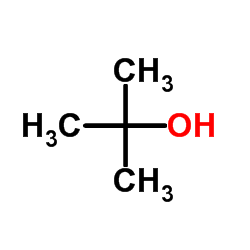
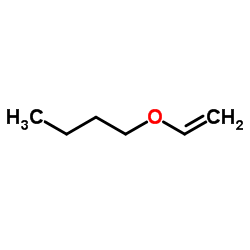
![Butane,1-[2-(ethenyloxy)ethoxy]- structure](https://image.chemsrc.com/caspic/001/4223-11-4.png)


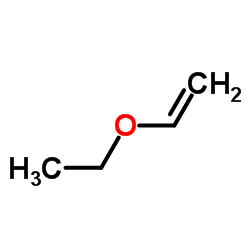

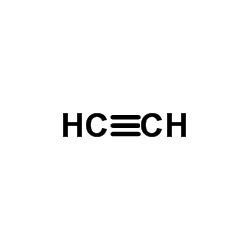

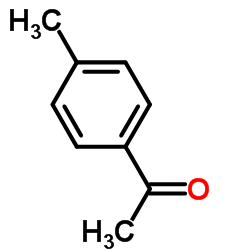 CAS#:122-00-9
CAS#:122-00-9 CAS#:1009-61-6
CAS#:1009-61-6 CAS#:68473-30-3
CAS#:68473-30-3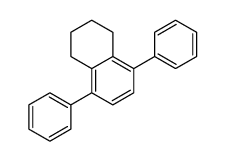 CAS#:92760-00-4
CAS#:92760-00-4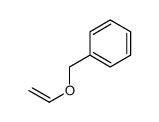 CAS#:935-04-6
CAS#:935-04-6
